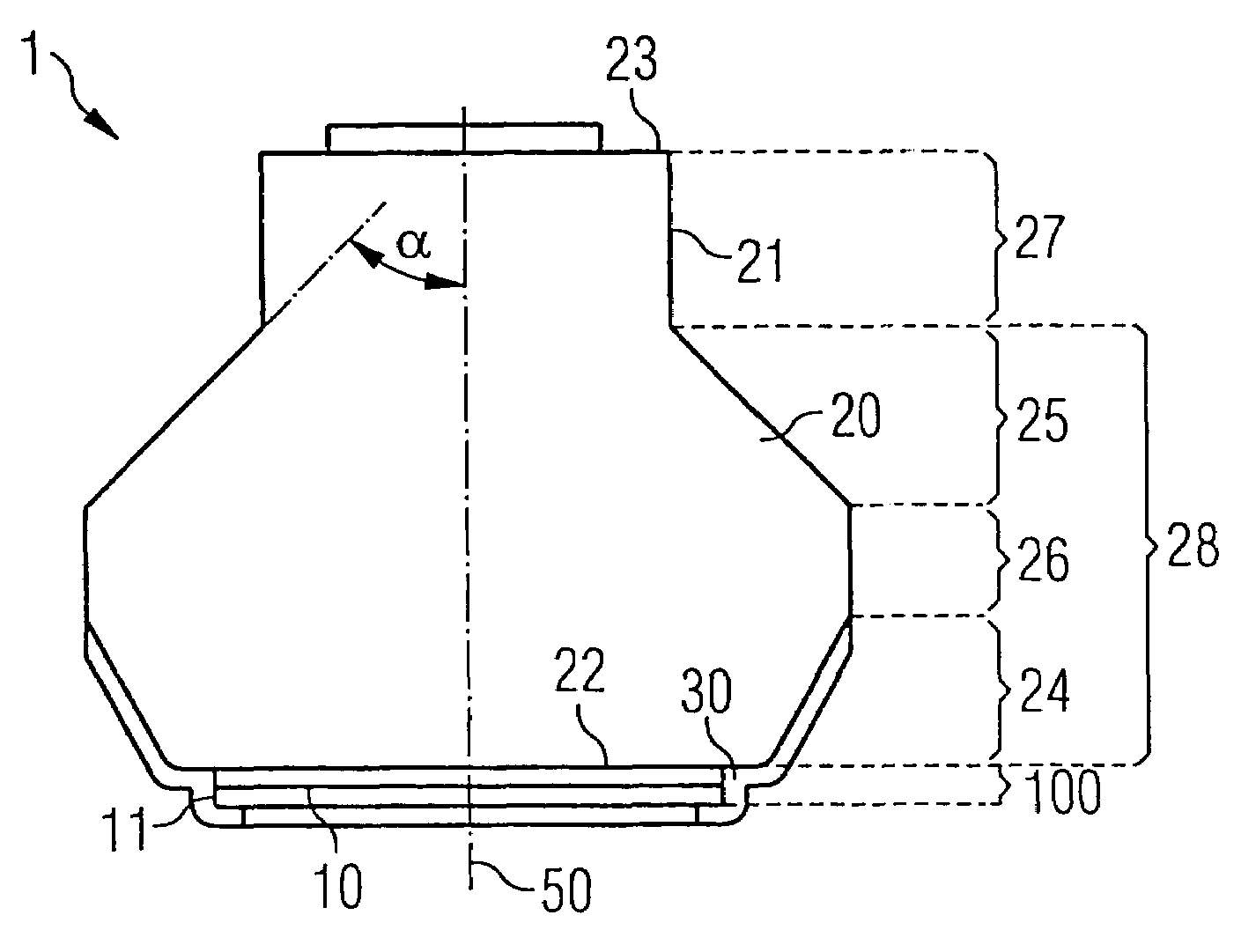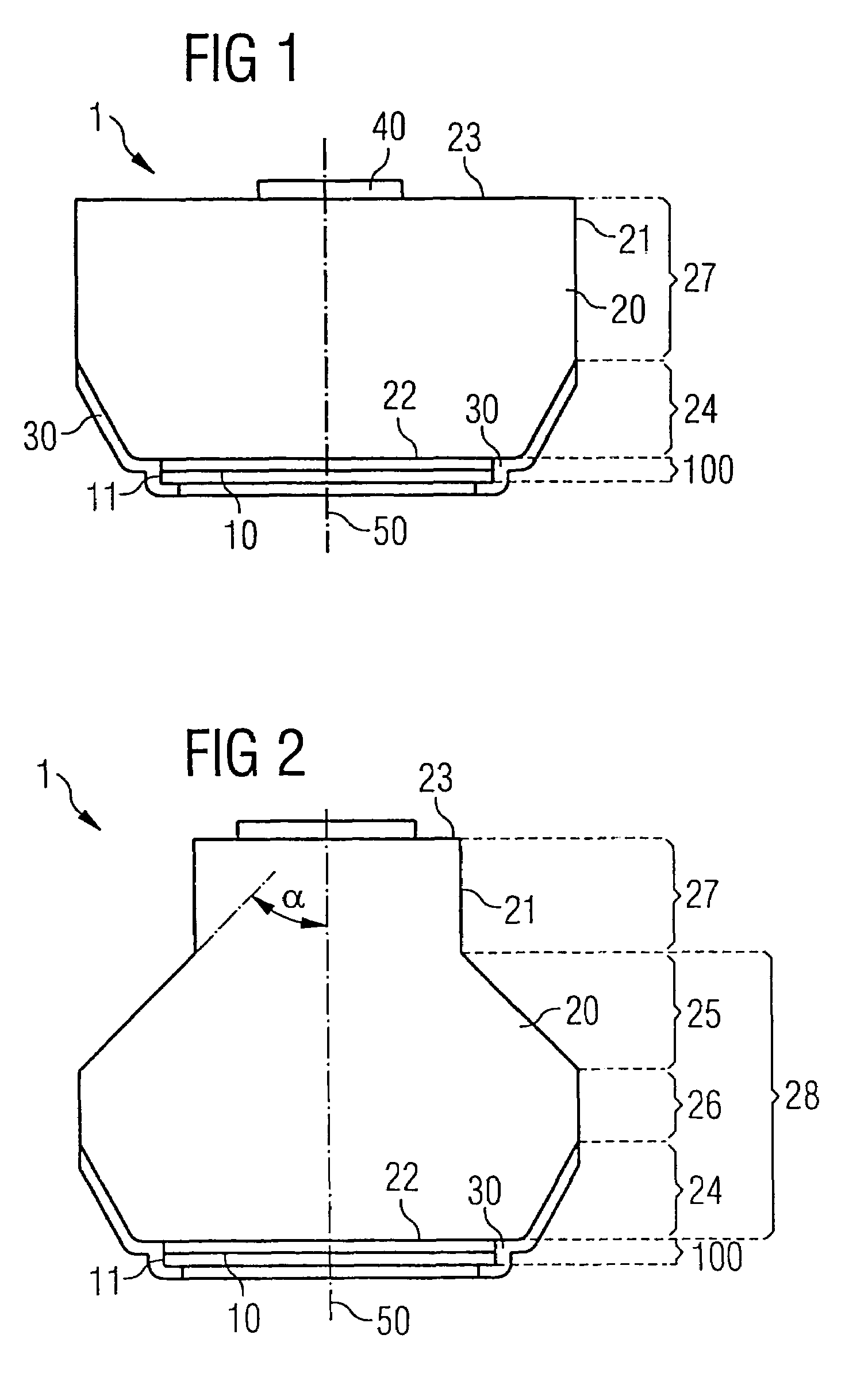Radiation-emitting semiconductor chip, method for production thereof and radiation-emitting component
- Summary
- Abstract
- Description
- Claims
- Application Information
AI Technical Summary
Benefits of technology
Problems solved by technology
Method used
Image
Examples
Example
DETAILED DESCRIPTION OF THE DRAWINGS
[0078]In the Figures, respectively identical or identically acting constituent parts of the exemplary embodiments are in each case provided with the same reference symbols.
[0079]FIG. 1 shows purely diagrammatically a cross section through a radiation-emitting semiconductor chip 1 according to the invention. An active layer 10 that generates the light, for example a single quantum well (SQW) or multiple quantum well (MQW) structure based on InGaN, lies within a multilayer structure 100, which, by way of example, comprises overall a plurality of nitride-based semiconductor layers. The precise construction of such a multilayer structure is dependent on the material system and the desired properties of the component. Details in this respect are disclosed in the prior art and therefore are not explained in any further detail in the present context.
[0080]The multilayer structure 100 is produced for example by metal organic vapor phase epitaxy methods on...
PUM
 Login to View More
Login to View More Abstract
Description
Claims
Application Information
 Login to View More
Login to View More - R&D
- Intellectual Property
- Life Sciences
- Materials
- Tech Scout
- Unparalleled Data Quality
- Higher Quality Content
- 60% Fewer Hallucinations
Browse by: Latest US Patents, China's latest patents, Technical Efficacy Thesaurus, Application Domain, Technology Topic, Popular Technical Reports.
© 2025 PatSnap. All rights reserved.Legal|Privacy policy|Modern Slavery Act Transparency Statement|Sitemap|About US| Contact US: help@patsnap.com



